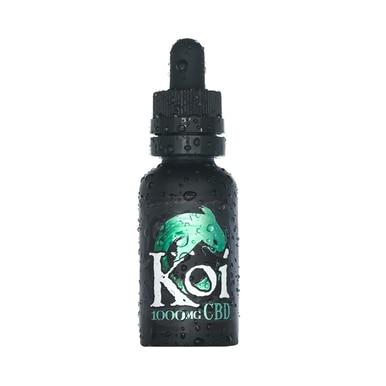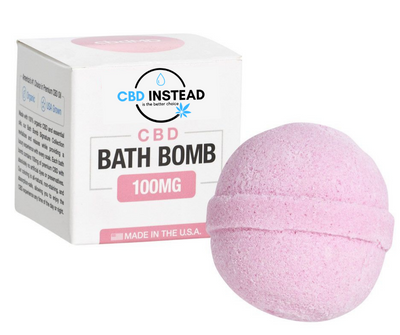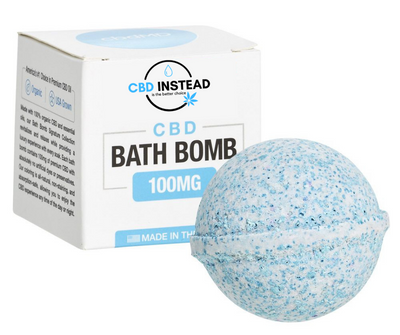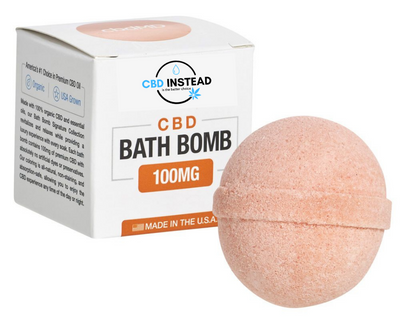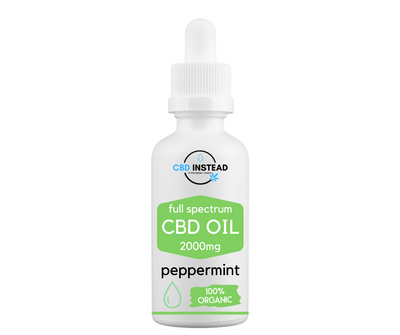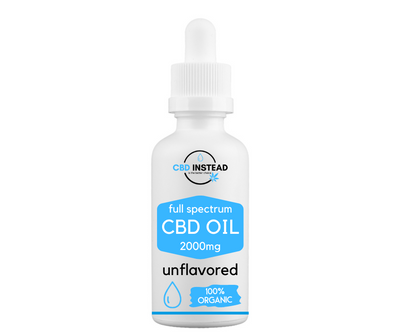When you think about arthritis, the elderly community might come to mind. However, the elderly aren’t the only ones who have to deal with this painful condition. Young people can also become victim to juvenile idiopathic arthritis which can cause our youth to start taking medication to ease the pain. Many families are starting to use CBD instead for juvenile idiopathic arthritis.
CBD oil may be able to help with juvenile idiopathic arthritis because of its ability to reduce your sensitivity to pain and help with inflammation. This could be a more attractive treatment option because unlike many medications, it doesn’t do damage to your liver when taken for long periods of time and doesn’t have any risk for addiction or overdose.
What Is JIA?

Juvenile idiopathic arthritis (JIA) is a condition that involves swelling in one or more joints lasting at least six weeks and generally begins before the age of 16. JIA includes several different types of arthritis that were previously known as juvenile rheumatoid arthritis (JRA). There are a variety of symptoms that could indicate this disorder such as:
- Muscle and soft tissue tightening
- Bone erosion
- Joint misalignment
- Changes in growth patterns
How Is JIA Diagnosed?
If your child is starting to complain about muscle or joint related pain, you need to take them to a doctor so they can be properly diagnosed. Your doctor will watch their symptoms to see if they last for at least six weeks as well as see how the symptoms progress during the first six months after the onset of symptoms. Your child’s doctor will also do blood work to see if the results indicate arthritis.
Types Of JIA
JIA is a general term that covers different forms of arthritis. Some forms only cause symptoms in the joints or muscles while others can affect other parts of the body as well.
Systemic JIA
Systemic JIA causes inflammation in one or more joints and affects about 10% of children with JIA. It is common for high spiking fevers of 103°F or higher to coexist with the inflammation, and it can last at least two weeks. Other signs can include:
- Inflammation of the heart
- Inflammation of the lungs
- Anemia
- Enlarged lymph nodes
- Enlarged liver
- Enlarged spleen
Oligoarticular JIA
Oligoarticular JIA causes arthritis in four or fewer joints, usually the larger ones like knees ankles and elbows. This type of arthritis is the most likely to cause uveitis, which is chronic eye inflammation. Children with a positive test for antinuclear antibody are at a greater risk for developing eye inflammation and will need to frequent the eye doctor.
Polyarticular JIA
Polyarticular JIA causes inflammation in five or more joints, usually the small joints like in the fingers or hands. Weight-bearing joints, like your ankles, and the jaw can also become inflamed. About 25% of children who have arthritis will have this form.
Juvenile psoriatic arthritis
Juvenile Psoriatic Arthritis is usually a combination of arthritis and a skin disorder called psoriasis. Psoriasis can start to occur many years before the joint pain starts to surface. Joint symptoms are pain and swelling in one or more joints, usually the knees, ankles, fingers, wrists, and toes. Symptoms of psoriasis are a scaling red rash often behind the ears, on the eyelids, elbows, knees, at the scalp line, or in the belly button.
Enthesitis-related JIA
Enthesitis-related JIA is characterized by tenderness in the area where the bone meets a ligament, tendon, or other connective tissue. Enthesitis is what this tenderness is, and it often accompanies the joint inflammation of arthritis. The places it is most commonly found in the feet, hips, and knees. It can also affect other parts of the body, not just the joints. This type of arthritis is usually more common in young males and begins between the ages of 8 and 15.
Undifferentiated arthritis
Undifferentiated arthritis is juvenile arthritis that doesn’t fit into any of the above subtypes, or it involves symptoms that are occurring in two or more subtypes.
Causes Of JIA
The causes of JIA are unknown to researchers. There is no proof that food, allergies, lack of vitamins, or toxins play any role in the development of this disease. Scientists do believe it could be a combination of genetic and environmental factors much like other autoimmune diseases. Researchers believe there may be a trigger involved, like a virus, that can start the development of arthritis in children who may be genetically vulnerable.
Self-Care For JIA

If your child has arthritis, you are going to need to learn some coping skills for their pain. Some activities will be more difficult and sometimes of the day are filled with more pain. Talking to your doctor can help you learn some self-care tips, here are some tips you might expect to hear.
Morning Stiffness Relief
If your child has severe morning stiffness, this is a good indication of how active the arthritis is. The more active the arthritis, the longer the morning stiffness lasts. Some children do well with cold treatments, though most children find the most success with warmth. You can try these things to help reduce morning stiffness:
- Taking a hot bath or shower
- Sleeping in a sleeping bag or sweat suit
- Range-of-motion exercises
- Using a hot or cold pack
Physical Activity
Exercise is great for a child regardless if they have arthritis. When your child does have arthritis, physical activity helps to keep their muscles and bones strong. Exercise helps your child manage their weight, which can also help with pain in weight-bearing joints. Certain activities like jogging or jumping on a trampoline could make symptoms worse, so try these activities with your child who has arthritis:
- Swimming
- Bike riding
- Yoga
- Elastic stretching
- Brisk walking
Nutrition
Just like exercise, a healthy diet is important for all children regardless of any disease or condition. But when it comes to children with arthritis, certain foods can make their symptoms better, and some make them worse. There is no arthritis curing diet, but there are foods that you can encourage your child to eat to make their disease more manageable. Try to stay away from these foods:
- Processed foods
- Saturated fat
- Fried food
- Red meat
- Sugar
Try to fill your child’s diet with these foods:
- Fruits
- Vegetables
- Fish
- Nuts
- Beans
Also like exercise, a healthy diet can help your child manage their weight helping to relieve weight-bearing joints. If chewing is painful for your child, having a healthy diet gives them the opportunity to get as much nutrition as they can manage to eat.
Emotional Issues
Being in pain isn’t easy, especially when you are developing the areas in your brain that control your emotions. Teaching your child how to cope with the emotional impact arthritis can help them and the entire family. The whole family can work together toward learning more about the illness as well as treatment options to help you feel more in control of this disease.
Encouraging your child to express their feelings about their disease can help them work through the turmoil. Having a professional counselor who talks with your child and the whole family can be very beneficial as they can help you learn the proper coping mechanisms as well as teach you more about the disease.
Treatment Options For JIA
Other than self-care tips, your doctor is also going to go over the treatment options for your child with arthritis.
Eye Care
If your child is showing symptoms of arthritis, they need to get their eyes checked out by a doctor because eye inflammation can occur in children with JIA. Uveitis, or eye inflammation, doesn’t always cause painful or visible symptoms. To reduce their chance of vision loss, you need to have reoccurring visits to the eye doctor.
Dental Care
JIA in the jaw joint can cause stiffness, pain, and altered growth. Your child may need assistive devices recommended by their dentist because this pain and stiffness can make brushing and flossing difficult. If your child can’t keep their mouth open for long periods of time, you’ll need to work something out with your dentist where you have more frequent but shorter periods of time where your child is in the dentist’s chair for dental work.
Splints and Orthotics
Using splints can help correct joints that are bending in the wrong position, helping to relieve pain. The common areas where splints are used are:
- Knees
- Fingers
- Wrists
Orthotics are shoe inserts which might be able to help with differences in leg length or any balance issues.
Surgery
Surgery isn’t a common treatment plan in the early stages of JIA. But it can be advised to correct a difference in leg lengths, replace a damaged joint, or straighten a deformed or bent joint.
Medication
Doctors may prescribe medication, but it is rarely the only treatment option for children with JIA. Doctors who diagnose your child with JIA have the main goal of slowing down the disease and help prevent further destruction to their bones, joints, cartilage, and soft tissues. Your child may be prescribed the following medication alongside other treatment options:
- Nonsteroidal Anti-Inflammatory Drugs (NSAIDs)
- Disease-Modifying Antirheumatic Drugs (DMARDs)
- Biological Response Modifiers
- Corticosteroids
These types of medications can reduce inflammation and slow down the progression of arthritis. However, one issue that these medications have are side-effects. Sometimes the doctor will have to determine whether or not the benefits of the treatment outweigh the risks. One way to get this level of treatment without the risky side-effects may be by using CBD Hemp oil.
What Is CBD?

Cannabidiol (CBD) is a chemical that is extracted from cannabis. Unlike the chemical THC, this cannabinoid doesn’t cause any intoxicating effects. This is one of the main reasons scientists have taken a closer look at how this chemical affects the body as well as how well tolerated this medication is among a wide range of ages. You can also not get addicted to, overdose, or get withdrawal symptoms from CBD. The reason this natural remedy has so many potential benefits is that it interacts with our endocannabinoid system.
Endocannabinoid System
The endocannabinoid system is your body’s regulator. It helps to make sure that everything in your body is functioning properly. The endocannabinoid system is made up of several parts, including cannabinoid receptors and endocannabinoids. One reason CBD oil is so potentially therapeutic because it elevates the endocannabinoids making them more effective when binding to the cannabinoid receptors.
Cannabinoid Receptors And Endocannabinoids
There are two cannabinoid receptors that scientists have studies, the CB1 and CB2 receptors. Both receptors are located all over the body, but the CB1 receptors are more densely located in the brain while CB2 receptors are more spread out.
The two endocannabinoids that researchers have studied and are the most active are anandamide and 2-AG. Both endocannabinoids bind to both cannabinoid receptors, but Anandamide mainly binds with the CB1 receptor while 2-AG mainly binds with the CB2 receptor.
When anandamide binds with the CB1 receptor, it helps to regulate your neurological system. This includes your appetite, sensitivity to pain, mood, and sleep cycle. When 2-AG binds with the CB2 receptor, it helps to mediate the immune functions like inflammation.
How Can CBD Help With JIA?
CBD For Pain
Studies have shown that CBD oil can reduce your body’s sensitivity to pain. CBD elevates the endocannabinoid anandamide which binds to the CB1 receptor. Through a process called retrograde signaling, the anandamide travels to the brain cell sending pain signals and reduces the signaling granting relief.
CBD For Inflammation
The inflammation in arthritis is the reason that joints become stiff and swelled and part of the reason arthritis is so painful. In the joints, there is a lubrication that is supposed to make the joints move smoothly. With inflammation, the synovium becomes thick making it harder to move and causing pain. CBD oil has shown in studies to reduce this swelling helping to grant relief in joints.
CBD For Depression And Anxiety
If your child is starting to show signs of depression or anxiety because of their pain, CBD oil may be able to help. It may also be able to reduce the damage of stress to the brain, potentially preventing the development of a mental health disorder.
CBD For Psoriasis
If your child is starting to experience rashes, CBD topicals may be able to help. Studies have shown that CBD oil may be able to help regulate the skin cell’s life cycle, helping to reduce the itchy patches. Because CBD oil may be able to help with pain and inflammation, it may also be able to help reduce the itchiness and redness.
Talk To Your Child’s Doctor
If you want to try CBD oil for your child’s arthritis, be sure to talk to their doctor first. If you want to give it to them orally, the CBD oil can interfere with other medications. Allergies and adverse reactions are rare, but your doctor can help you monitor your child to make sure that they aren’t affected negatively. Your doctor and help you determine what is the best treatment route possible for your child.















